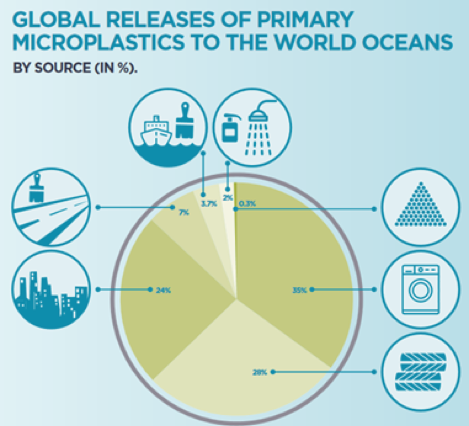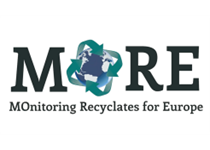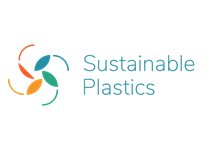FAQ
General FAQs
Polymers - what are they?
Polymers (“poly” = many + “Meros” = parts) are macromolecules resulting from the union of several units of small structural molecules called monomers.
Polymers can be classified as natural or synthetic. Natural polymers are common in plants (rubber, cellulose, starch, etc.) and animals (glycogen, proteins, etc.). Synthetic polymers, such as plastics, are obtained by man through chemical reactions. All plastics are polymers.
Polymers result from the process of polymerisation of monomers, from which homopolymers or copolymers may be derived.
Homopolymers are polymers obtained from the union of identical monomers. Examples: Polyethylene (PE), Polystyrene (PS), Polypropylene (PP) and Polyvinyl Chloride (PVC).
Copolymers are derived from different monomers. Example: ABS.
Plastics - what are they?
The term “plastic” is commonly used to describe a wide range of synthetic or semi-synthetic materials used in a number of applications.
The word “plastic” is derived from the Greek adjective plastikos which means “mouldable”. This property of malleability or plasticity allows it to be melted, pressed or extruded, adapting to the most diverse forms - such as films, fibres, plates, tubes, bottles and boxes, among others.
Plastics are materials consisting of long chains of molecules called “polymers”, formed from smaller structural units - monomers (low molecular weight molecules). Plastics are organic materials. The raw materials used in the production of plastics are natural products such as cellulose, coal, natural gas, salt and - obviously - petroleum.
How are plastics produced and classified?
The two main processes used for the production of plastics are called polymerisation and polycondensation.
In a polymerisation reactor, monomers (such as ethylene and propylene) are joined together to form long polymer chains. Each polymer has its own properties, structures and sizes. Regarding their physical properties, plastics can be divided into two groups:
• Thermosetting or thermosets: gain the form of rigid products due to heat action and chemical reactions and are not susceptible to being moulded again by heat action. (Examples: Bakelite, Polyurethane (PU), unsaturated polyester resins (UP), phenolic resins, epoxy resins, etc.
• Thermoplastics: soften when heated and harden again when they cool, which allows them to be moulded repeatedly. More than 80 % of commonly-used plastics are of this type. (Examples: Polycarbonate (PC), Polyvinyl chloride (PVC), Polystyrene (PS), Polyethylene (PE), Polypropylene (PP), Polyethylene terephthalate (PET), among others.
What are the main characteristics of Plastics?
Plastics are extremely versatile materials due to their excellent properties.
This versatility can be seen in the most diverse applications, with plastics able to assume a rigid or flexible, transparent, translucent or opaque form (the possibilities are practically infinite), in which their main characteristics are:
• Their lightness, due to their relatively low density
• High flexibility and impact resistance
• They are hygienic and aseptic, ideal for use in packaging, particularly in the food industry
• Low Processing Temperature
• Thermal insulation, allowing substantial reduction of energy losses, enabling gains in the reduction of energy expenditures
• Electrical insulation
• They are resistant to corrosion, making them durable and suitable for use in aggressive environments, also requiring a lower level of maintenance compared to any other traditional material
• Recyclable
• Can be designed to have limited durability (biodegradable plastics)
• Among many other characteristics
In which applications are plastics used?
As a result of their properties and characteristics, plastics have come to play a significant role in the following areas of application:
• Packaging
• Civil Construction
• Mobility and transport
• Electricity and electronics
• Agriculture
• Sport and leisure
• Energy
• Health care
• Toys
• Footwear
• Furniture
• Decoration
• Clothing
• Telecommunications
• Among others
Sustainability and Circular Economy FAQ
Can plastics be recovered?
Plastics, when they become waste, can be recovered so that they can be useful again. This recovery can take the form of recycling processes or energy recovery.
Mechanical Recycling
Mechanical recycling of plastics is a very widespread process. The quality of the final product, however, is highly dependent on the quality of the waste to be recycled, in particular waste of urban/household origin.
Generally, plastic waste, when mechanically recycled, goes through a series of steps such as crushing, washing, drying, agglomeration, extrusion and granulation. The resulting (recycled) material is later incorporated into the manufacture of new products.
Chemical recycling
Chemical recycling is the process by which large polymer chains are “broken down”. This technique can produce other chemicals such as synthesis gas, make new polymers identical to the original polymer (feedstock recycling) or even new plastics that may or may not be the same as the original.
In some processes, chemical recycling allows a less rigorous separation of plastic by types. However, and until now, chemical recycling processes are still at a research and development stage, so it is hoped that in the future various facilities will be in operation.
Energy recovery
In addition to recycling, and when there is no other possible form of recovery, plastic waste can still be recovered energetically. In this case, the waste undergoes an incineration process under controlled conditions and in dedicated facilities - incinerators - producing energy that can be used, e.g. public network. Currently, the technology used in the construction of this type of facility allows emissions to be guaranteed in compliance with the most demanding environmental legislation.
After all of the aforementioned possibilities for recovering waste have been exhausted and there are no more alternatives available, the waste will be deposited in landfills, which obviously does not provide any value so it is a destination to be avoided, or at least minimised.
Why should I separate plastic waste (packaging)?
By correctly separating plastic packaging waste and placing it in the selective collection equipment available (yellow recycling bin or other selective deposition equipment) you can be certain that they will be forwarded for recycling and incorporated into a new product, thus contributing to avoiding landfill deposition, so that smaller quantities of virgin raw materials are consumed in the production of certain objects and the economic profitability of waste management is maximised, thus contributing to a more sustainable environment while promoting the circular economy.
Are plastic pellets the main source of Microplastics in the environment?
Contrary to what is often conveyed by public opinion, the main sources of microplastics in marine environments are textile fibres and rubber particles from car tyres, which represent 35 % and 28% respectively. Plastic pellets contribute only 0.3 % to this problem, as illustrated in the following figure:

What are the main sources of plastic pollution in the oceans?
The first observation is that this problem does in fact exist! The plastics industry is the first to recognise that this is a serious problem and cannot be overlooked, so it is committed to being part of the solution. It is also recognised that Europe's contribution to this problem is very small; around 1 %.
However, the size or the percentage by weight doesn’t matter; it’s enough to be disturbing. Waste abandoned on land or in the ocean in an unregulated fashion creates this problem.
Therefore, if we want to solve the problem we have to identify its cause.
And contrary to what you might imagine, the plastics that appear in the oceans mostly originate on land (roughly 80 %) and the largest contributions come from countries in Asia and Africa, where there are no appropriate waste collection and management systems; the waste ends up in the rivers, which transport it to the seas and oceans.
Standardisation FAQ
What is a Standard?
A standard is a document established by consensus and approved by a recognised body which provides rules, guidelines or characteristics for activities or their results, ensuring an optimum level of order in a given context.
What is Standardisation?
Standardisation is the activity aimed to establish, in light of actual or potential problems, provisions for common and repeated use, with a view to obtaining the optimum degree of order in a given context. In particular, it consists of the preparation, publication and promotion of the use of the Standards. (EN 45020)
What are Sectorial Standardisation Bodies (ONS)?
These are public, private or mixed bodies, recognised by the ONN in order to perform standardisation activities in a given domain, with their main functions being coordination of the work of the associated CTs, normative clarifications on the areas concerned, preparation of standardisation plans and dissemination of the Sector’s normative activities, among others. In Portugal, this is the Portuguese Quality Institute (IPQ).
What are Technical Committees for Standardisation (CT)?
These are technical bodies that aim to draft national norms and issue normative opinions in certain fields, and in which stakeholders participate on a voluntary basis in the matters in question, reflecting, as much as possible, a balanced representation of the socio-economic interests encompassed. CTs are created by the National Standardisation Body.
Are the Standards mandatory?
In general, the standards are voluntary. They become mandatory if there is legislation that determines their enforcement.
What are harmonised European Standards?
Harmonised standards are linked to “New Approach” directives. These directives define safety requirements for some product families which are considered dangerous or associated with serious risks. For the products covered, compliance with the requirements of these standards is mandatory.
Where can the list of harmonised European standards be consulted?
The list of harmonised standards is published in the Official Journal of the European Union, C series, on the EUR-LEX website. You can access this website by using the following path: http://eur-lex.europa.eu/oj/direct-access.html?locale=pt%20.
What does “CE Marking” mean?
Which products must have the “CE marking” designation?
You can consult the List of “New Approach” directives, as well as the text of each one, at: http://www1.ipq.pt/pt/assuntoseuropeus/marcacaoce/listadasdirectivas/Pages/ListaDirectivas.aspx
What is a “New Approach” Directive?
“New Approach” is the expression by which the Council of Ministers Resolution of 7 May 1985 is known, according to which directives shall outline the essential requirements of health, safety and welfare of persons and animals, the protection of the environment that products must comply with and the forms of proof of compliance with those requirements.
The standardising documents (EN) define the technical characteristics of the products. Directives drawn up in accordance with this resolution are commonly referred to as “New Approach Directives”.







